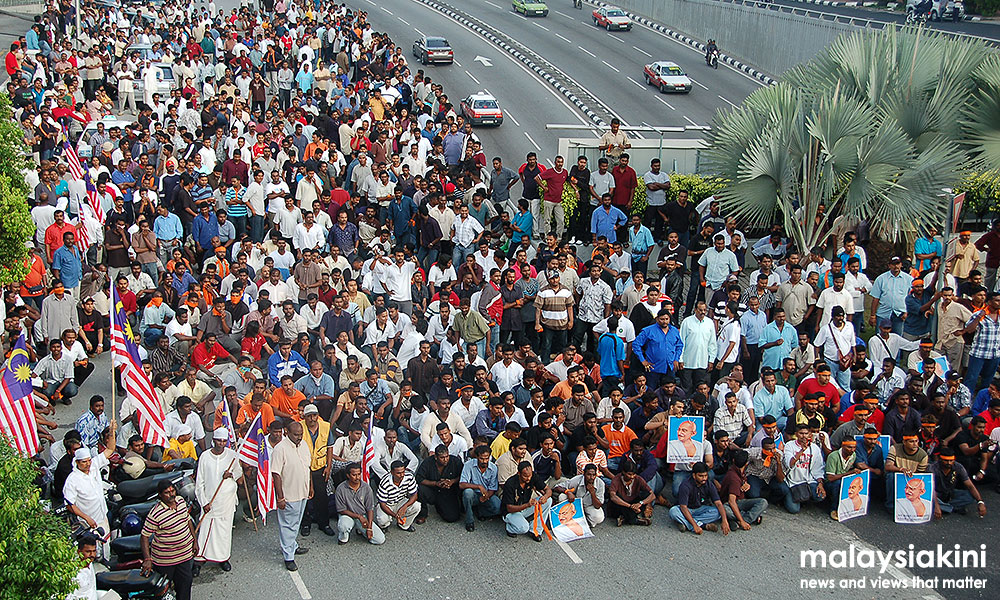
In 2007, Hindu Tamils of Malaysia staged a historic rally in Kuala Lumpur.
The rally drew an unprecedented number of Tamils, which led to the unfurling of the Hindraf banner in representing the underclass of the Malaysian Indian community.
The rally’s leaders were arrested by local authorities and certain charges of violent conduct were made against the crowd.
The catalyst to this swelling discontent amongst Hindu Tamils against the incumbent government has been the rising tide of Islamism in Malaysia, that led to the demolition of Hindu places of worship and body-snatching cases.
Later, the Hindraf protesters added issues such as undue abuse of Indians under police detention, the Tamils of Malaysia being an economic underclass in Malaysia, and the non-citizen status of a significant number of Tamils in Malaysia due to the inability to apply for an identity card.
The Hindraf leaders understood that the Indians in Malaysia were enduring a postcolonial situation, when they submitted a petition to the British High Commission to urge Her Majesty to appoint a Queen’s Counsel to represent Malaysian Indians in a suit against the British government.
Malaysian Indians were suing the British government over their frustrations and resentment, which had been pent up for over 50 years in post-independence Malaysia, with a claim for reparations.
My book "Hindraf and the Malaysian Indian community", which was released in May 2017 by Silverfish Press, analyses the following questions about the Hindraf phenomenon:
- Was there political space for the negotiation of minority rights at the time of decolonization?
- How did leaders of the Malayan and Malaysian Indian community bargain with the Malay majoritarian government at key points in the trajectory of Malaysian history, such as during the planning stages of the New Economic Policy in the early 1970s?
- How effective was the Malaysian Indian Congress (MIC) in negotiating the socio-economic position of Malaysian Indians, and were there spaces of political activity besides the MIC?
My book is an attempt to get at answers, rather than a descriptive catalogue of events that have occurred within the Malaysian Indian Community since independence.
It highlights that the lustre of Hindraf’s efforts has somewhat diminished over the last ten years, due to a dilution of its efforts by other political components of the Malaysian Indian community, and weak decision-making within the organisation while prominent Hindraf leaders faced arrest under the Internal Security Act 1960.
The emergence of Hindraf was a crucial indicator to the Malaysian government and people that the Malaysian Indian community was in need of help and facing the serious dilemma of questioning their rights as citizens of Malaysia.
“Hindraf and the Malaysian Indian Community” is available online from Silverfish Books. The book will be launched at Penang Institute on 10 Aug, 2017 at 5pm. -Mkini
No comments:
Post a Comment
Note: Only a member of this blog may post a comment.